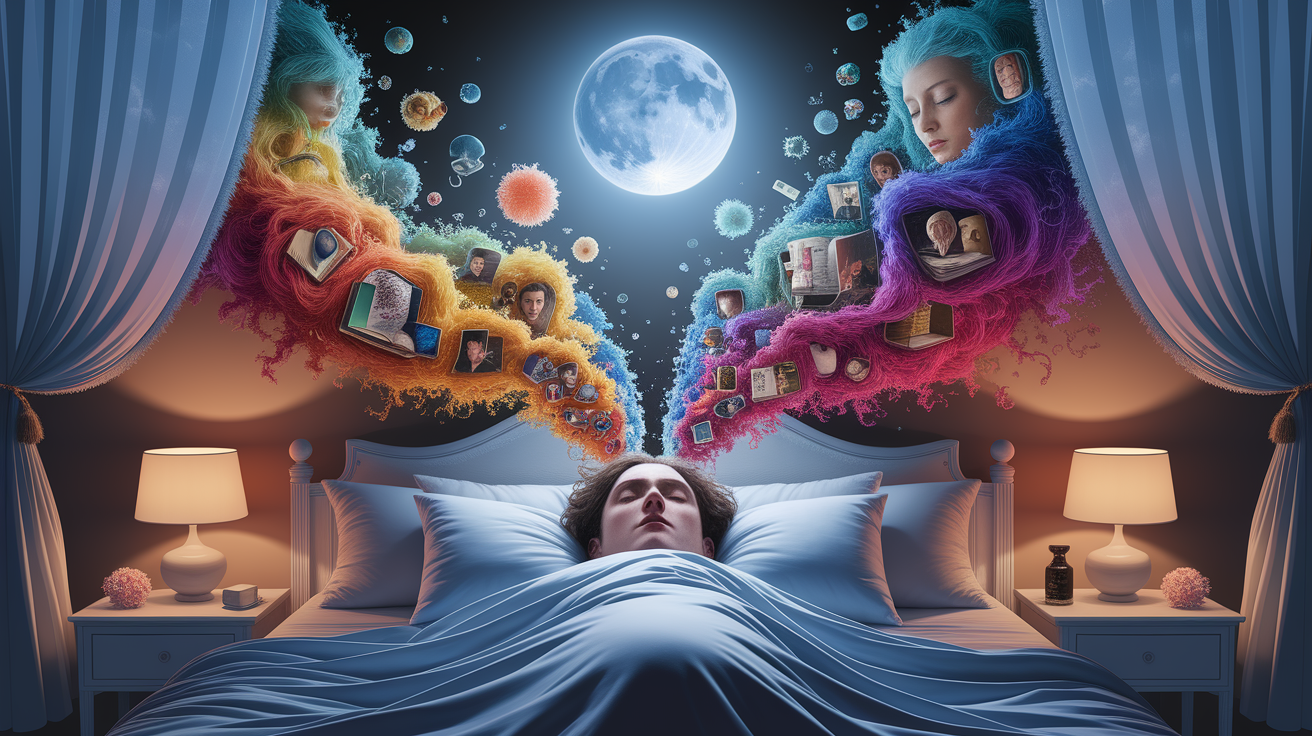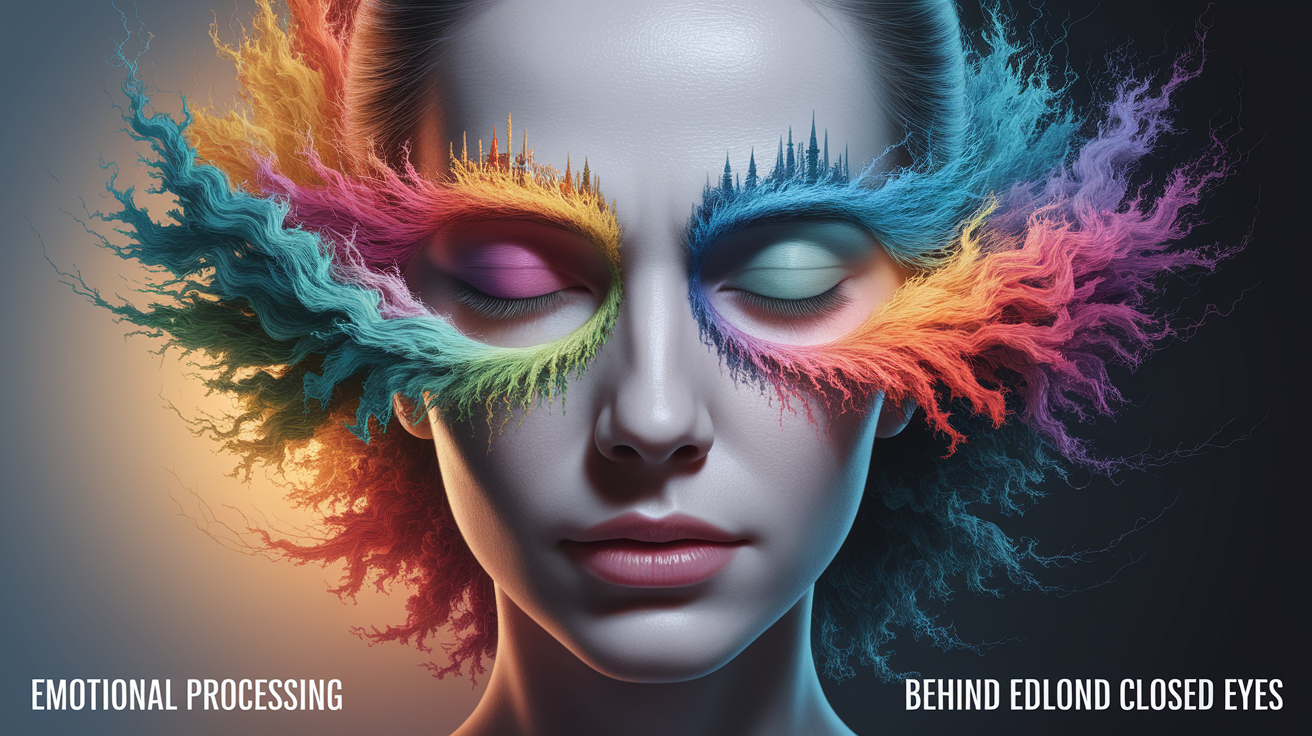Quick Answer: Dreams are fascinating mental experiences that happen mostly during REM sleep, and scientists believe they may help with memory consolidation, emotional processing, problem solving, and even “mental housekeeping.” While there are many theories, no single explanation for why we dream has been proven, making them one of sleep science’s most intriguing mysteries.
Dreams Decoded: Why We Really Dream
Why do humans dream during sleep? That question has inspired centuries of curiosity, from ancient dream interpretation to modern neuroscience research. In the simplest terms, dreams are vivid sequences of thoughts, images, or feelings that our subconscious mind creates—often weaving together familiar places, people, and imaginary scenarios. They can be wonderful, strange, or unsettling, and occur in both REM and non-REM sleep, though REM dreams tend to be the most surreal and memorable.

Because dreams happen while the brain is still active and sending signals to visual, emotional, and memory-related regions, many scientists see them as a window into how our minds handle information when we’re offline.
Strengthening Memories While You Sleep
One major explanation for the purpose of dreaming is memory consolidation. This is like your brain’s own “save button” for experiences and lessons from the day.

- During sleep, especially REM stages, the hippocampus works with the prefrontal cortex to sort and store memories.
- Dreams may help link recent events to older knowledge, making it easier to recall information later.
- This is why studying and then sleeping often improves test performance—you’re literally giving your brain time to file the facts in its “memory cabinets.”
Emotional Processing Behind Closed Eyes
Dreams often carry strong emotional tones. This isn’t random—it may be your mind’s way of safely rehearsing feelings or untangling emotional knots.

- The amygdala, a brain area involved in emotion, is highly active in REM sleep.
- Dreams might work like an overnight therapy session, replaying situations to reduce stress or build coping strategies.
- This could explain why we sometimes dream of conflicts, fears, or lost loved ones—it’s our brain’s private way of practicing emotional regulation.
Mental Housekeeping and Information Cleanup
Another view suggests dreams act like a computer clearing clutter from its hard drive—a process nicknamed “mental housekeeping.”

- Our brains filter out unnecessary details, strengthen useful links between concepts, and drop irrelevant ones.
- This may keep our mental systems running smoothly, helping avoid information overload.
- It could also explain why dreams sometimes feel random—they’re the by-products of a brain tidying itself.
Simulating Life’s Challenges in Dreamland
Some researchers believe dreams serve as rehearsal space for real-world problem solving. Think of it like a simulator for life’s curveballs.

- Dreams can test our reactions to threats, challenges, and puzzles in a safe “virtual reality.”
- This problem-solving theory fits with the fact that creative breakthroughs sometimes come in dreams—like a musician hearing a new melody or a scientist imagining an experiment.
- It’s a low-risk environment for building mental flexibility, without real-world consequences.
Dreams as By-Products of Brain Activity
According to the activation-synthesis model, dreams might simply be the brain making sense of random bursts of neural pathways firing in REM sleep.
- Brainstem activity stimulates sensory and memory areas without external input.
- The higher brain, seeking order from chaos, pieces together a story—even if it’s nonsensical.
- From this angle, dreams may have no special purpose beyond being a natural side effect of brain activity during sleep cycles.
The Ongoing Debate: No Single Answer
Despite decades of dream research, there’s no universal agreement on the scientific purpose of dreaming.
- Memory-based theories, emotional regulation models, and by-product explanations all have evidence supporting them.
- It’s entirely possible that dreams serve multiple overlapping functions—or vary in purpose from night to night.
- What’s certain is that dreams are interwoven with key brain functions like learning, creativity, and mental health.
Wake-Up Call: Embracing the Dream Mystery
Dreams remain one of the most personal and intriguing parts of the human experience. Whether they’re acting as emotional safety nets, mental filing systems, creativity boosters, or simply delightful side effects of sleep science, dreams show how vibrant and complex the brain is—both awake and asleep.
Rather than trying to box their meaning into a single theory, we can enjoy them as nightly adventures into the subconscious mind. If you want to capture more of yours, keeping a dream journal may help improve dream recall naturally and allow you to explore your own inner landscapes.













